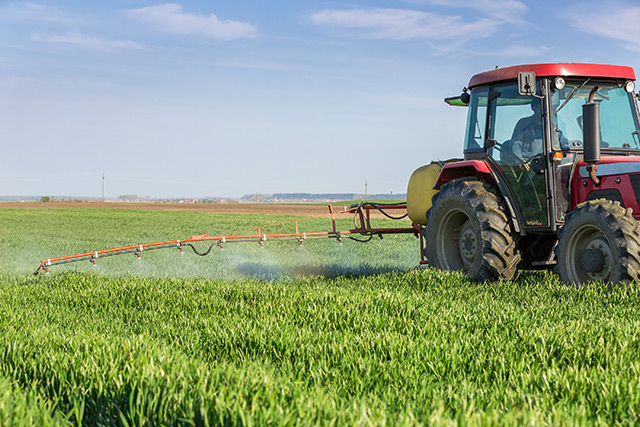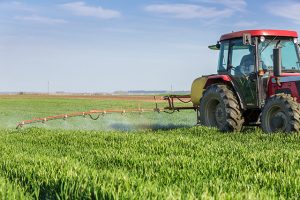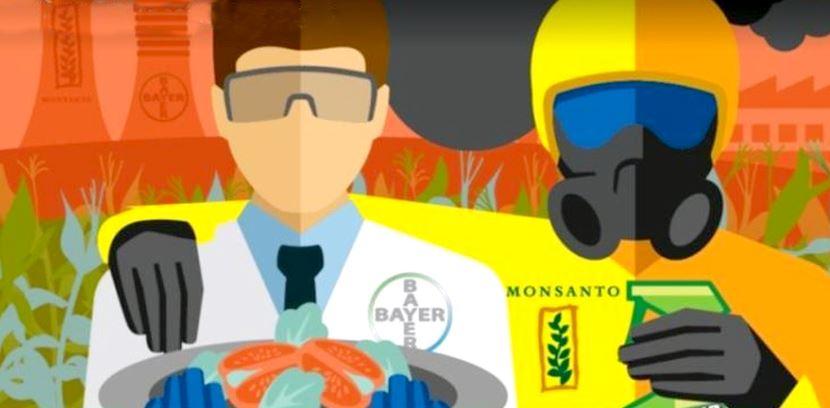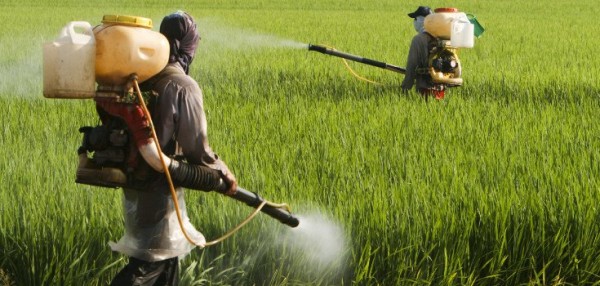Cuprous oxide – toxicity, side effects, diseases and environmental impacts
12/05/2017 / By Michelle Simmons

Cuprous oxide is an inorganic copper fungicide and insecticide used to control a variety of fungal pathogens, such as those that cause mildews and leaf spots. This chemical compound works by inhibiting fungal spores and pathogens from entering the host tissues. It is applied on a wide variety of crops, such as almonds, mangoes, apricots, avocado, citrus, conifers, coffee, cocoa, grapes, kiwi fruit, apples, nectarines, olives, stone fruits, tomatoes, and walnuts. In addition, it is also used as a mineral supplement for livestock. It is registered for use a lot of countries worldwide, such as those in the European Union (EU). It can be physically described as a yellow, red or brown crystalline powder. Cuprous oxide can also be identified in the names of cuprite, dicopper oxide, copper oxide, red copper oxide and copper (1) oxide. Cuprous oxide has the molecular formula of Cu2O.

List of known side effects
The chemical compound can be harmful if swallowed and if inhaled. According to the an entry by the Centers for Disease Control and Prevention (CDC), if cuprous oxide is inhaled, it may cause cough, sore throat, metal fume fever, and metallic taste. If it comes in contact with skin, it may result to dry skin. Moreover, if it comes in contact with the eyes, it may lead to redness and pain. Lastly, if ingested, it may cause abdominal pain, diarrhea, nausea, vomiting, and metallic taste.
Like all other copper compounds, cuprous oxide can cause poisoning. Symptoms of cuprous oxide poisoning include irritation of the skin, eyes and respiratory tract, metallic taste, nausea, vomiting and stomach pain. In more serious situations, there may be blood in vomit or black or tarry stools, jaundice and enlarged liver. Moreover, broken blood cells may lead to circulatory collapse and shock. For its environmental side effects, cuprous oxide can be extremely toxic to the aquatic environment with long lasting effects.
Body systems affected by cuprous oxide
The body systems affected by cuprous oxide include the respiratory, integumentary, ocular, digestive and nervous systems.
Items that can contain cuprous oxide
The items that can contain cuprous oxide are those fungicide or insecticide products that are used against fungal pathogens on fruits like mangoes, avocado, grapes, kiwi, plums, and olives, nuts and cocoa. Some of the items that can contain cuprous oxide are Perenox, Kuprite, Copox, AG Copp 75, and Chem Copp 50.
How to avoid cuprous oxide
There are several ways on how to avoid exposure to cuprous oxide. A person can be exposed to the chemical through inhalation, skin contact, eye contact and ingestion. One of these ways is to use local exhaust or wear a breathing protection. In order to avoid exposure through skin contact, it is important to wear protective clothing. In order to protect the eyes, it is essential to wear safety goggles or eye protection in combination with breathing protection. Lastly, it is important to remember to refrain from eating, drinking or smoking when working with the chemical.
Where to learn more
- Physics breakthrough can use sunlight to directly transform CO2 into clean fuels like methane, without using fossil fuels
- Copper-blended fabric provides protection against damaging EMFs
- Chemicals.news
- Toxins.news
- Pesticides.news
Summary
Cuprous oxide, an inorganic copper fungicide and insecticide, is used against fungal pathogens, such as those that cause mildews and leaf spots.
Other names for cuprous oxide include cuprite, dicopper oxide, copper oxide, red copper oxide and copper (1) oxide.
Cuprous oxide may cause cough, sore throat, metal fume fever, metallic taste, dry skin, eye redness, eye pain, abdominal pain, diarrhea, nausea and vomiting.
Cuprous oxide can be poisonous and cause irritation of the skin, eyes, and respiratory tract, metallic taste, nausea, vomiting and stomach pain.
In serious cases of cuprous oxide poisoning, there may be blood in vomit or black or tarry stools, jaundice and enlarged liver.
Cuprous oxide adversely affects the respiratory, integumentary, ocular, digestive and nervous systems.
Sources include:
Tagged Under: Cuprous oxide



















